I found this on Tramore beach last October. I am told that it is a curled octopus, Eledone cirrhosa. Paul Barry, Co Waterford
Fair play to whoever was able to state definitely that that was a curled octopus (also called the lesser octopus) from that dead and half-destroyed specimen. Two species of octopus occur in our waters. The common octopus has two rows of suckers on each arm, while the lesser octopus has only one row per arm. There are no remaining suckers on the seven arms visible from your photograph.
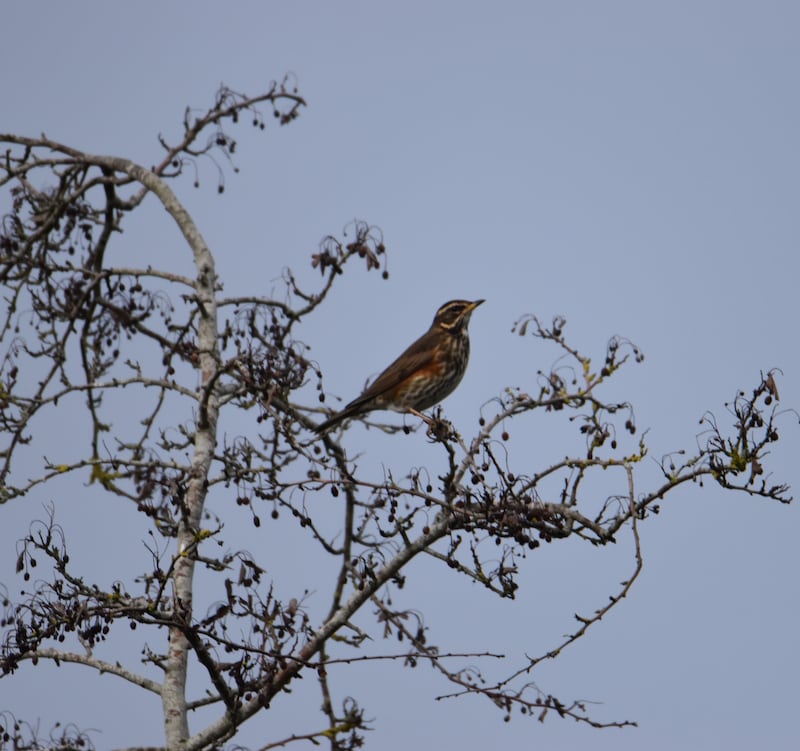
Here is a picture of a redwing taken in my garden in Killadreenan. Marty McDonald, Co Wicklow
Redwings are migratory thrushes characterised by rusty red flanks and a cream stripe above and below the eye. They come here in winter – often in large flocks – from their breeding grounds in Iceland and northern Europe. Their distinctive high wheezing call can be heard at night, as migrating birds often travel during darkness.
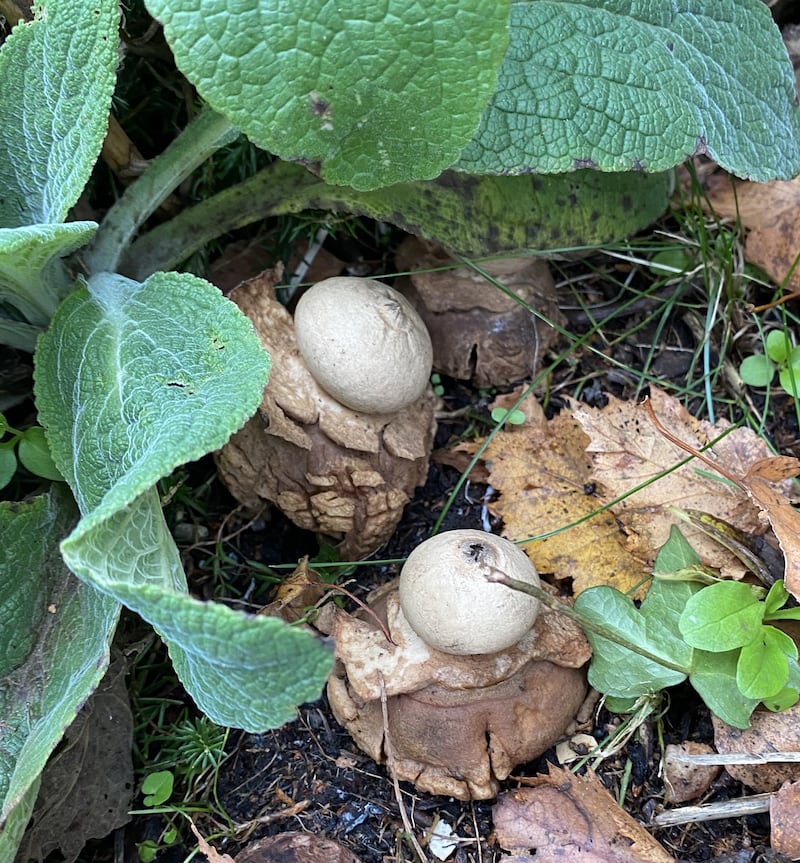
Is this a singular mushroom or has a second mushroom grown on top of another mushroom? Cathal Mac Aoidh, Dublin
This is a singe mushroom called the earthstar. The top white global structure is the spore sac. The fungus is closely related to puffballs. When the spores inside become completely ripe, the central mouth opens and the spores puff out like smoke from a chimney.
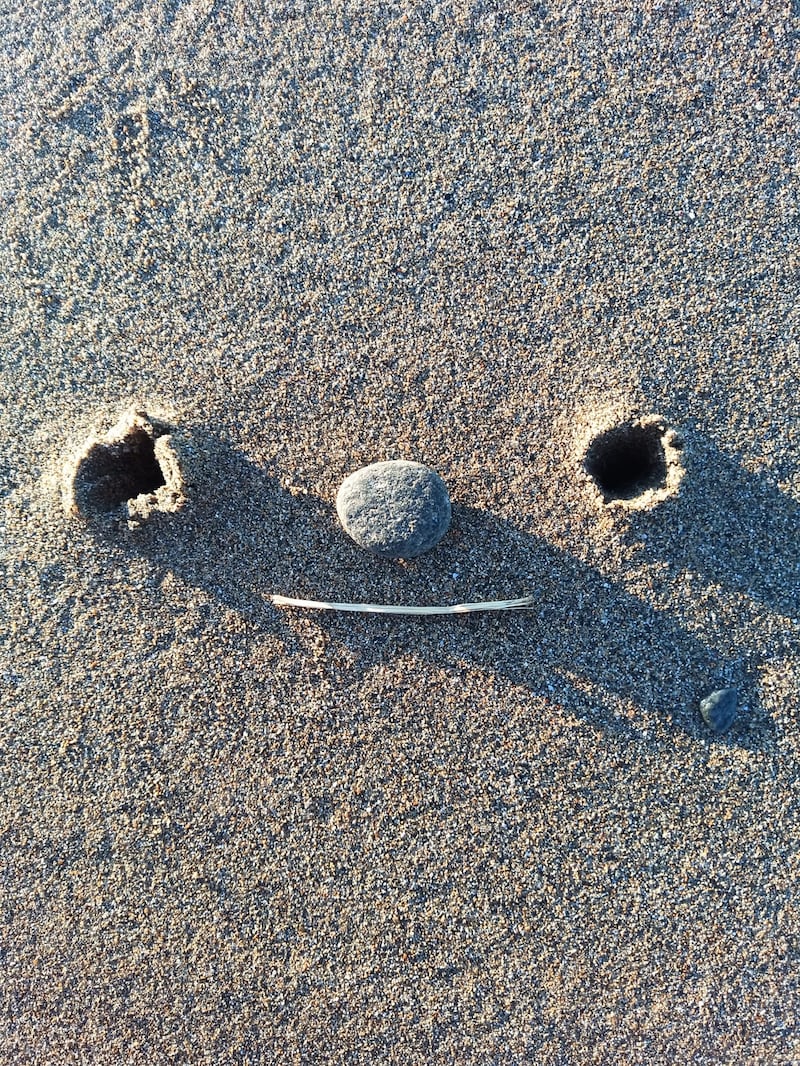
I noticed these small craters on Dunmoran beach in Co Sligo. The site was a quarter of the way down from the high-tide level. Each excavation, 25mm in diameter and 63mm deep, had footprints of the bird that made it. The bird must have had its meal soon after. The exposed sand from the retreating tide was firm enough not to collapse. What was the meal and who was the diner who left no debris and such neat evidence? Patrick Rolleston, Co Sligo
This was one for Niall Hatch of Birdwatch Ireland. He says it must have been the work of a wader. Given the stated depth of the holes (though he was not sure how you managed to measure them so precisely) and the apparent feeding behaviour, his best guess would be an oystercatcher. A buried shellfish such as a cockle or, indeed, a worm could be the meal.
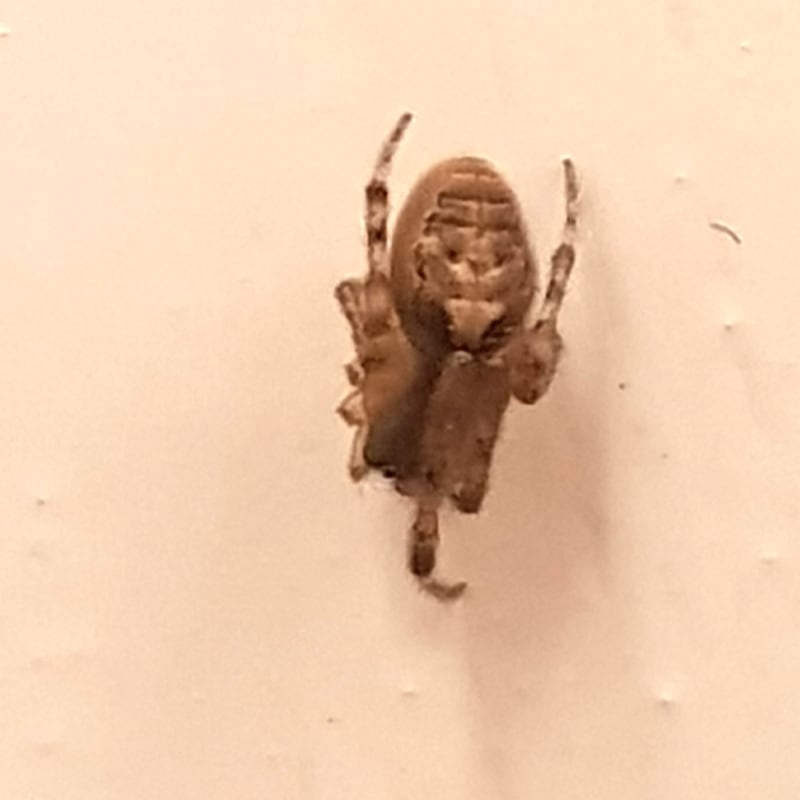
I brushed this little spider off the door. But it swung from my arm from an invisible filament about a foot long, so I let it land again on the door and took its picture. Zooming up shows an ugly, somewhat human face, about 3mm wide actual size. What is it? Frank Farrell
Beauty is in the eye of the beholder; I wonder what it thought of your face. This is the garden or cross spider, and what you are describing as a face is the abdomen of the spider. Given the small size, it is probably a male. They spin distinctive circular webs in the garden in September and keep in contact with a silk filament that they can produce very rapidly if necessary.
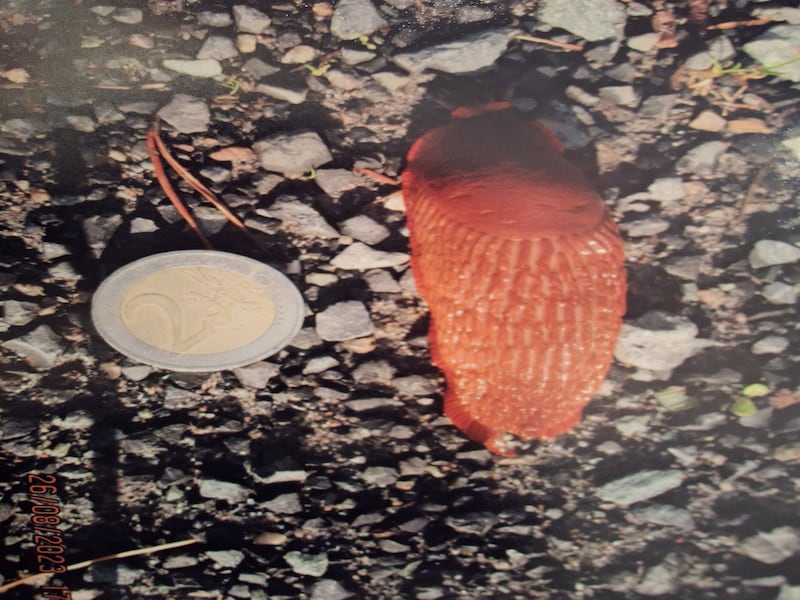
We saw several of these big slugs on the pathways up to Mweelrea, particularly in the area where there was plenty of gunnera growing. I never saw such big slugs before. Michael O’Toole, Connemara
This is Arion ater, a huge slug that can have several colour forms. It is often black when it is called the large black slug. It is an omnivorous species, eating carrion and dung as well as vegetable matter. It prefers rotting vegetation to living plants, so it really cannot be depended upon to put manners on stands of living invasive gunnera.
Please submit your nature query, observation, or photo with a location via irishtimes.com/eyeonnature





